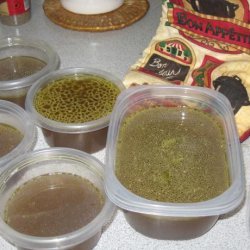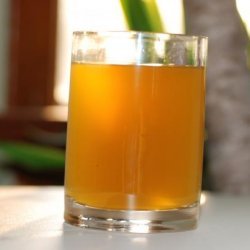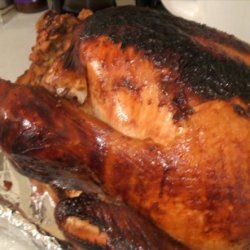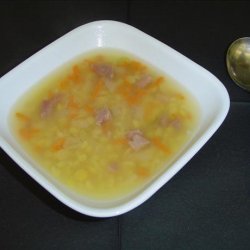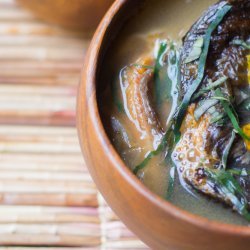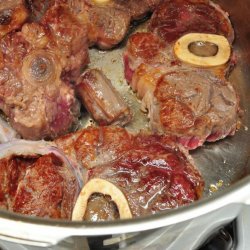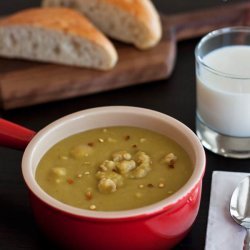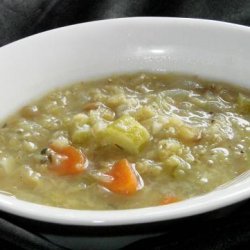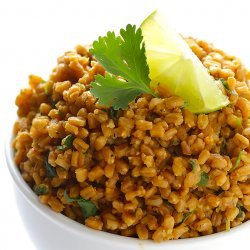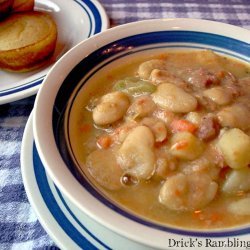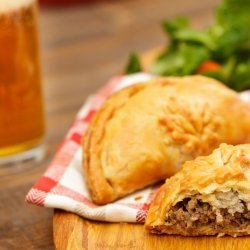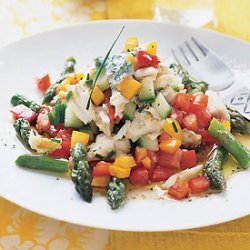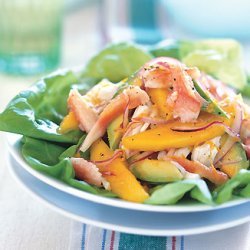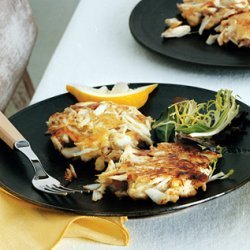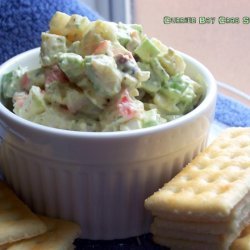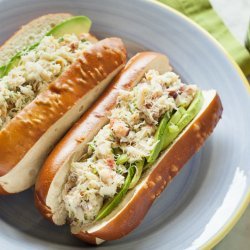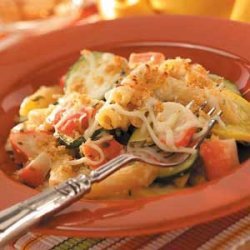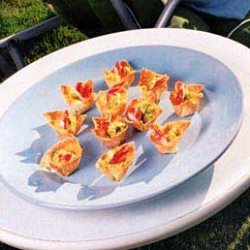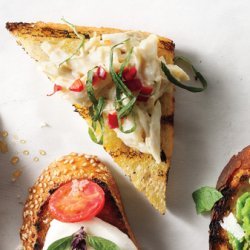Ingredients:
- 2 lb picked-over crab shells (cracked or chopped ) and /or crab bodies (cut into 1-inch pieces, carapace discarded; see cook''s notes), crab tomalley, and, if necessary, shrimp shells or lobster carcasses
Directions:
- 1. Place the crab bodies, shells, and tomalley (and optional shrimp shells or lobster carcasses) in a 6- to 8-quart stockpot and cover with the water. Bring to a boil, skimming the white foam from the surface of the stock. (Using a ladle and a circular motion, push the foam from the center to the outside of the pot, where it is easy to remove.) Reduce the heat so the stock cooks at a fast, steady simmer.
- 2. Add the onion, celery, tomatoes, garlic, bay leaves, peppercorns, and thyme, and let the stock simmer and cook down for about 1 hour. The liquid should just cover the crab shells as the stock cooks; if it doesn’t, just add a little water.
- 3. Season the stock lightly with salt. Taste for a rich flavor; if it seems light, simmer for about 20 minutes longer.
- 4. Strain the stock through a fine-mesh strainer. If you are not going to be using it within the hour, chill it as quickly as possible. Cover the broth after it has completely cooled and keep refrigerated for up to 3 days, or freeze for up to 2 months.
- Cook’s Notes The top shell, called the carapace, of all species of crabs offers little flavor other than that from the greenish brown tomalley you will find tucked in the interior. The head sac attached to the carapace, behind the face of the crab, is inedible and should not be added to stock. So I remove the tomalley to add to the stock for extra flavor and discard the carapace. The body is filled with meat and is excellent added to stock, especially if it is not picked of all its meat. The shells from the legs add good flavor whether they are picked or not.
- If you are using picked-over shells, they will already be broken up enough to be used for stock with no further preparation. If you are using whole crabs, pull off the top shell (carapace) and remove and save the tomalley. Discard the carapace. Break off the legs and roughly chop them, in order to extract maximum flavor. Cut the body into 4 or more pieces about an inch in size.
- Besides the crab, only a few vegetables, herbs, and spices are needed to make a great stock. More assertive seasonings are best added later, directly to the chowder. Use this recipe as a guideline, adding more onions or celery to your taste, but do not increase the amount of thyme or bay leaves.
- For equipment, you need a 6- to 8-quart stockpot, a ladle, and a fine-mesh strainer; I like to use a medium-weight Chinese cleaver when chopping up crabs, but a large chefs knife will do.
- 50 Chowders: One Pot Meals Clam, Corn & Beyond Scribner
Nutrition Facts
| Amount Per 1 Serving | |||
| Calories | 971.85 Kcal (4069 kJ) | ||
| Calories from fat | 120.54 Kcal | ||
| % Daily Value* | |||
| Total Fat | 13.39g | 21% | |
|---|---|---|---|
| Cholesterol | 646.37mg | 215% | |
| Sodium | 2851.61mg | 119% | |
| Potassium | 955.99mg | 20% | |
| Total Carbs | 26.91g | 9% | |
| Sugars | 14.22g | 57% | |
| Dietary Fiber | 6.71g | 27% | |
| Protein | 197.48g | 395% | |
| Vitamin C | 45.8mg | 76% | |
| Iron | 0.2mg | 1% | |
| Calcium | 768.6mg | 77% | |
| Amount Per 100 g | |||
| Calories | 29.88 Kcal (125 kJ) | ||
| Calories from fat | 3.71 Kcal | ||
| % Daily Value* | |||
| Total Fat | 0.41g | 21% | |
|---|---|---|---|
| Cholesterol | 19.88mg | 215% | |
| Sodium | 87.68mg | 119% | |
| Potassium | 29.4mg | 20% | |
| Total Carbs | 0.83g | 9% | |
| Sugars | 0.44g | 57% | |
| Dietary Fiber | 0.21g | 27% | |
| Protein | 6.07g | 395% | |
| Vitamin C | 1.4mg | 76% | |
| Calcium | 23.6mg | 77% | |
* Percent Daily Values are based on a 2000 calorie diet. Your daily values may be higher or lower depending on your calorie needs.
Find out how many calories should you eat.
Get Your Recipe of Health!
Follow RecipeOfHealth on Facebook!


